UN LAB Middleware Label: Title Begins
Charges Filed Against Those Who Threw, Cut, Killed Goats for Mohair
UN LAB Middleware Label: Title Ends
UN LAB Middleware Label: Description Begins
UN INT Intro Text w/ Centered Large Responsive Image - *Important Note* You must UNLINK this shared library component before making page-specific customizations.
You've never seen anything like this before. This video will make you leave that mohair sweater, blanket, or ball of yarn on the shelf.
As first reported by The Washington Post, a disturbing PETA investigation—the first of its kind—reveals that workers dragged, roughly handled, threw around, mutilated, and even cut the throats of fully conscious goats, some of whom cried out, in South Africa, the world's top mohair producer. This groundbreaking footage highlights just some of the abuse documented on all 12 of the angora goat farms the eyewitness visited.
After talks with PETA U.S., Arcadia Group has stopped placing orders for mohair products across its eight brands, which include Topshop. Gap Inc. has also agreed to stop placing orders containing mohair, including for its Gap, Old Navy, Banana Republic, and Athleta brands. And Inditex, one of the world's largest clothing retailers and owner of Zara, will ban mohair from its seven apparel brands by 2020. The H&M group—including its eight brands—has decided that it will no longer source mohair, effective immediately.
After hearing from thousands of compassionate shoppers, Forever 21 made the business-savvy and compassionate decision to ban mohair and Anthropologie announced that as of March 2019, it "will not buy or produce products containing mohair." Express, Inc., announced that it has "[no current or] future plans to include mohair in our assortment." Abercrombie & Fitch will not use mohair going forward.
In August 2018, the National Council of SPCAs filed cruelty-to-animals charges against four angora goat farmers based on PETA's evidence. South Africa's national police force is investigating the farmers—as well as shearers and farmworkers.
Please, won't you help these animals, too?
UN MIS Responsive YouTube Video - *Important Note* You must UNLINK this shared library component before making page-specific customizations.
Terrified, Crying Out, Roughly Handled, and Thrown Across the Floor
Shearing is extremely stressful to goats, who are prey animals and therefore terrified of being pinned down, vulnerable, and completely defenseless. Goat kids, who were being shorn for the first time, cried out in fear.
Some shearers lifted the goats up off the floor by the tail, likely breaking it at the spine. When one goat struggled, the shearer sat on her. After shearing, workers threw the animals across the wooden floor and hauled them around by their legs.
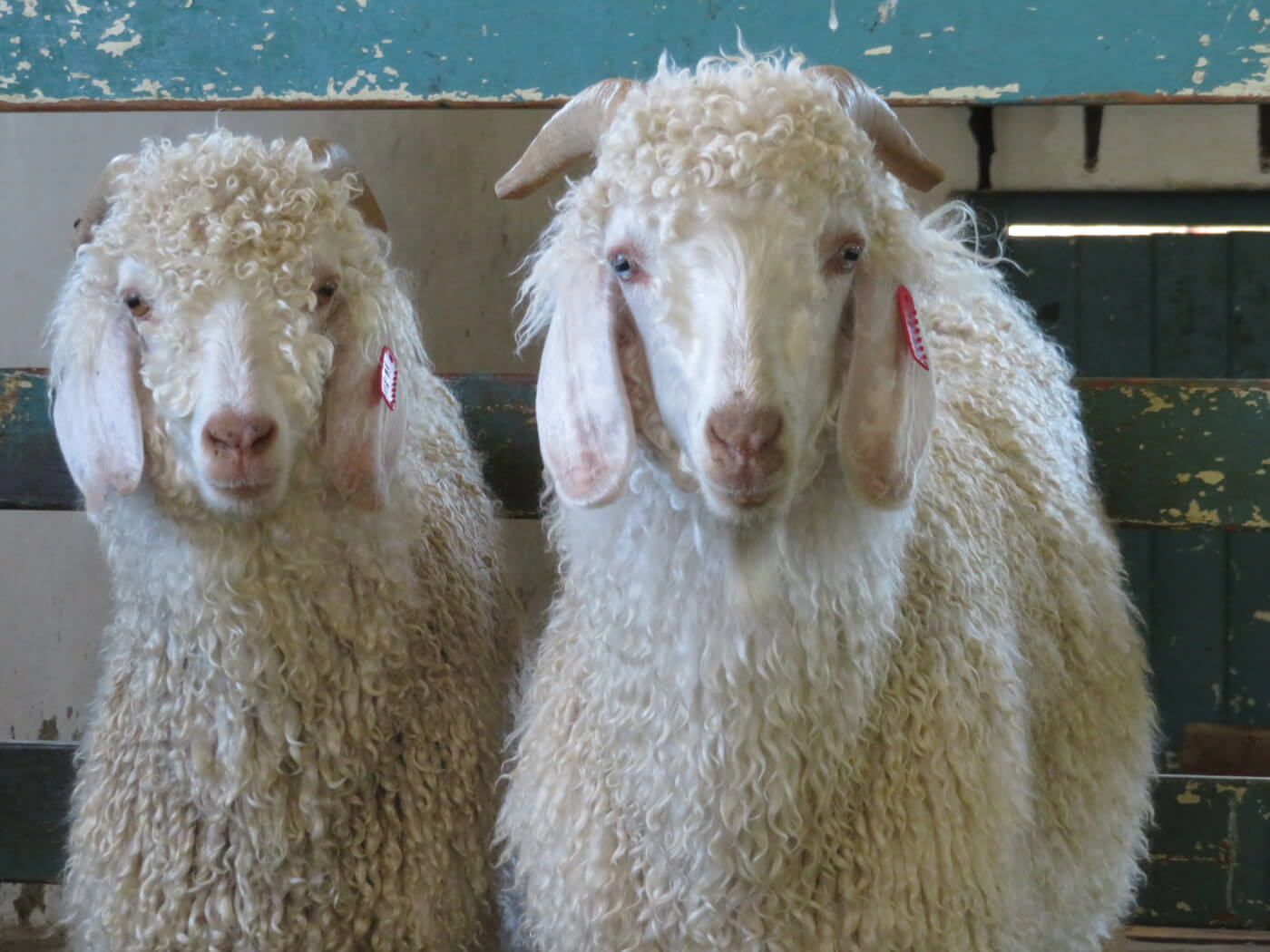
Angora goats are bred primarily for their soft inner coats, which are usually shorn twice a year, beginning when they’re as young as 6 months old.
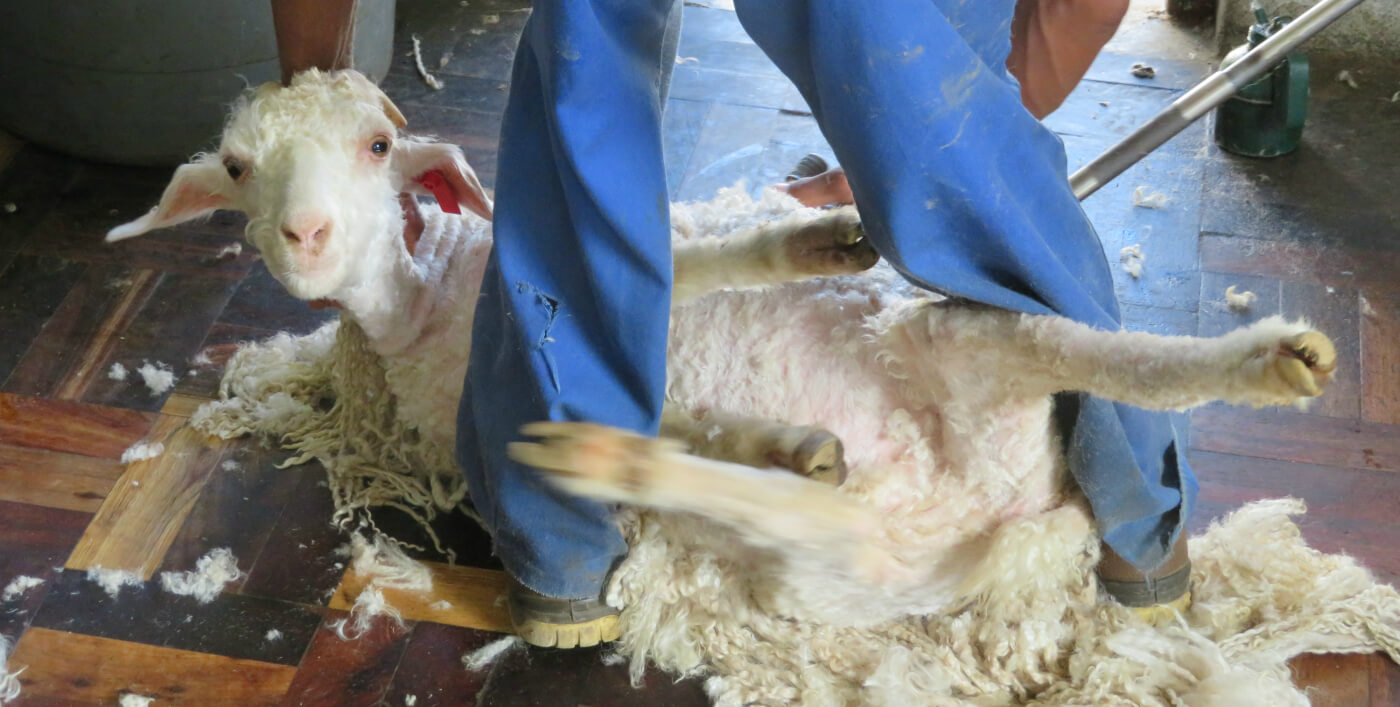
Shearing is extremely stressful to goats.
Systematic Suffering
The coats of some of the goats were matted with feces. To clean off the mohair before shearing, one farmer dumped rams into tanks of cleaning solution and shoved their heads underwater, which he admitted would poison them if they swallowed it.
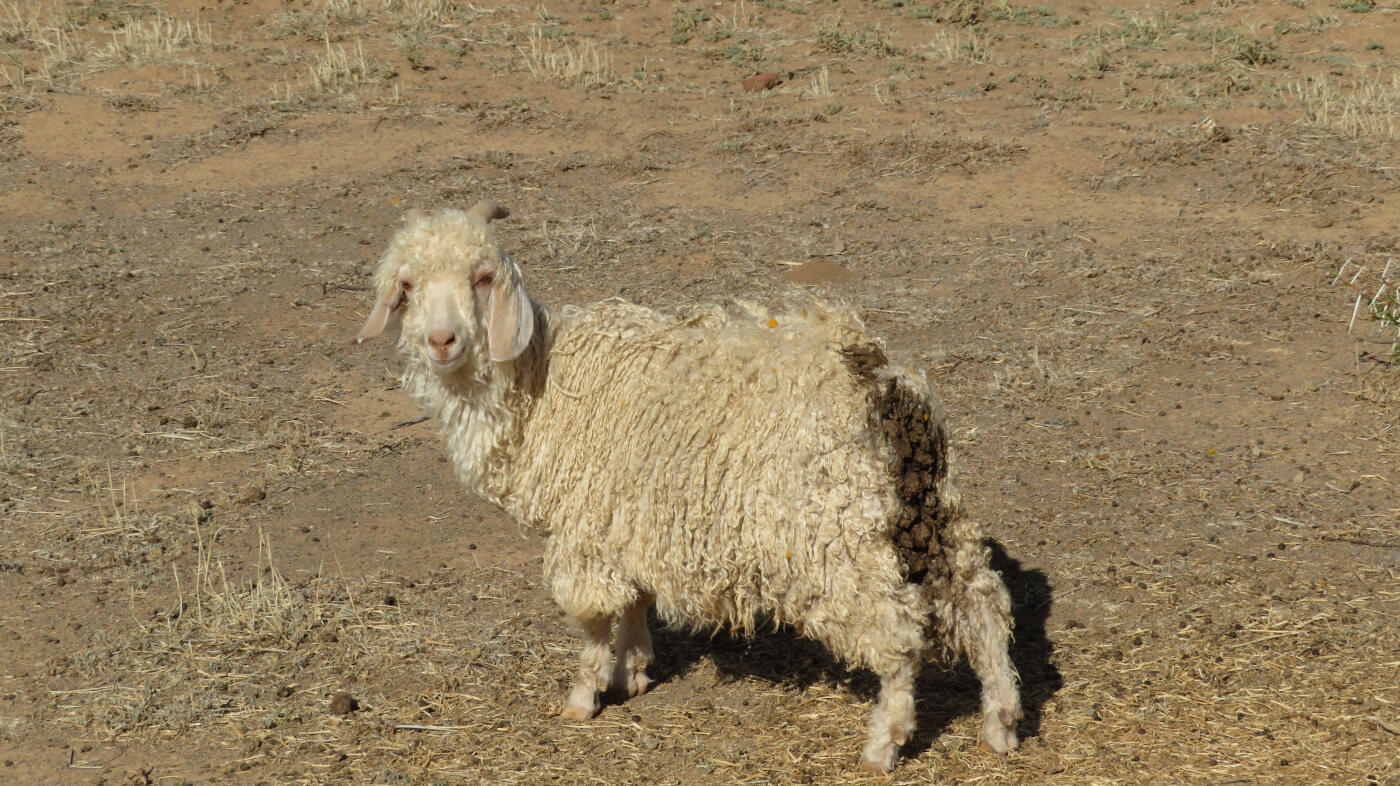
The goats’ coats were matted with feces.
Shearers are paid by volume, not by the hour, which motivates them to work quickly and carelessly, leaving the goats cut up and bleeding from the face and ears. They cut off swaths of skin and, according to farmers, even teats. As workers crudely stitched them up right on the filthy shearing floor, they were given no pain relief whatsoever.
Many goats were subjected to mutilation of their ears with pliers that punched sharp needles through them, causing them intense pain and, as one farmer described it, to "scream terribly." Another farmer said his goats "shout and roll around" when castrated without anesthetics because "it's bloody painful."
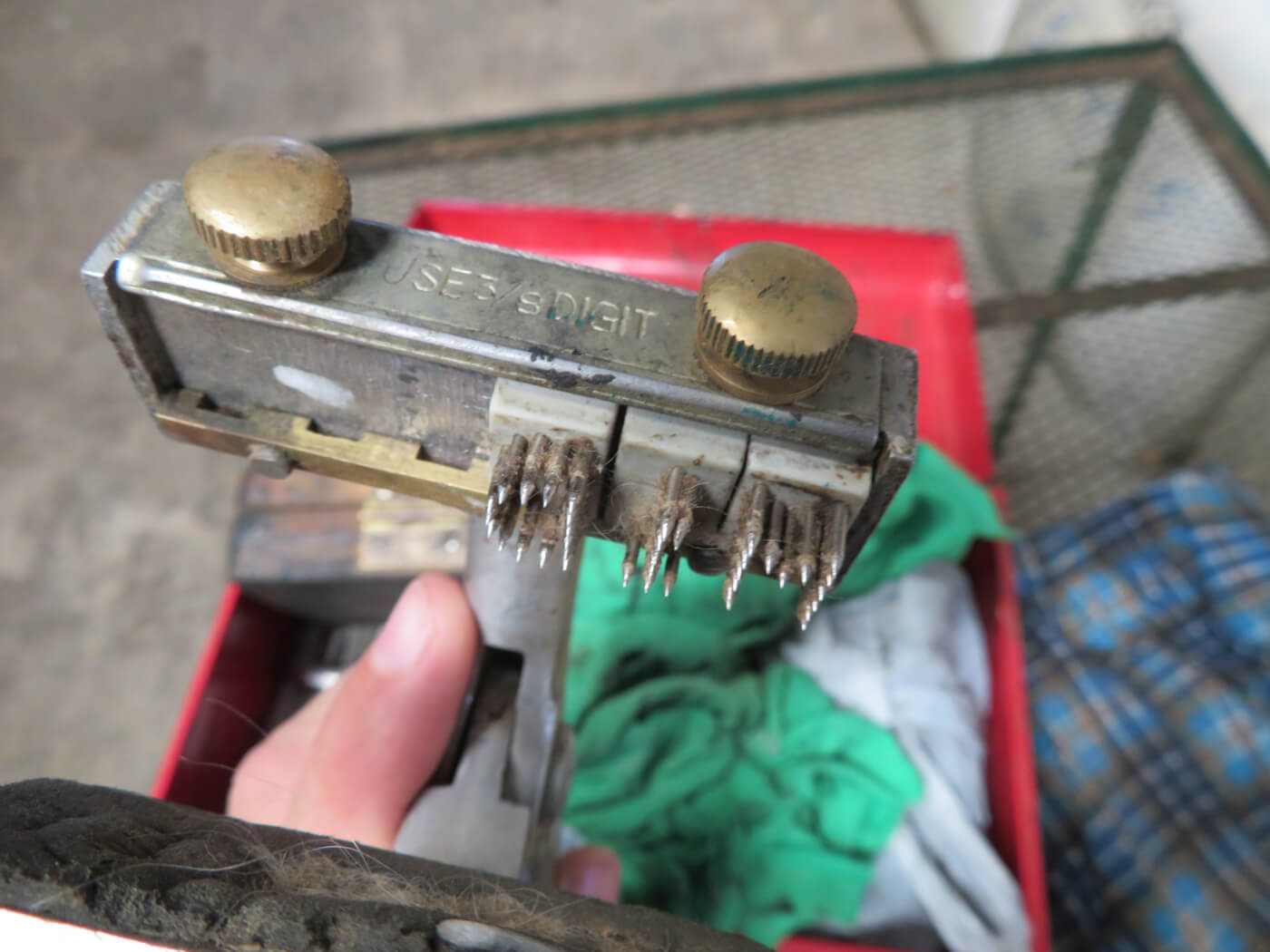
Goats struggled and cried out in pain when holes were punched in their ears with pliers like these.
Still another farmer said, "We … just cut … off" a goat's ear if it is believed to be cancerous. Yet another used a knife to cut into a goat's torso—apparently without any pain relief—to try to drain what she called an "abscess."
Thousands and Thousands of Deaths Before and After Shearing
One farmer said that at least 25 percent of goats on some farms die before their first shearing, which usually occurs when they are 6 months old.
Shearing robs goats of their natural insulation. Farmers admitted that after shearing, many goats die of exposure to the cold wind and rain. One man said that in just one weekend, 40,000 goats died of exposure across South Africa. Another said that up to 80 percent of goats die after shearing on some farms.
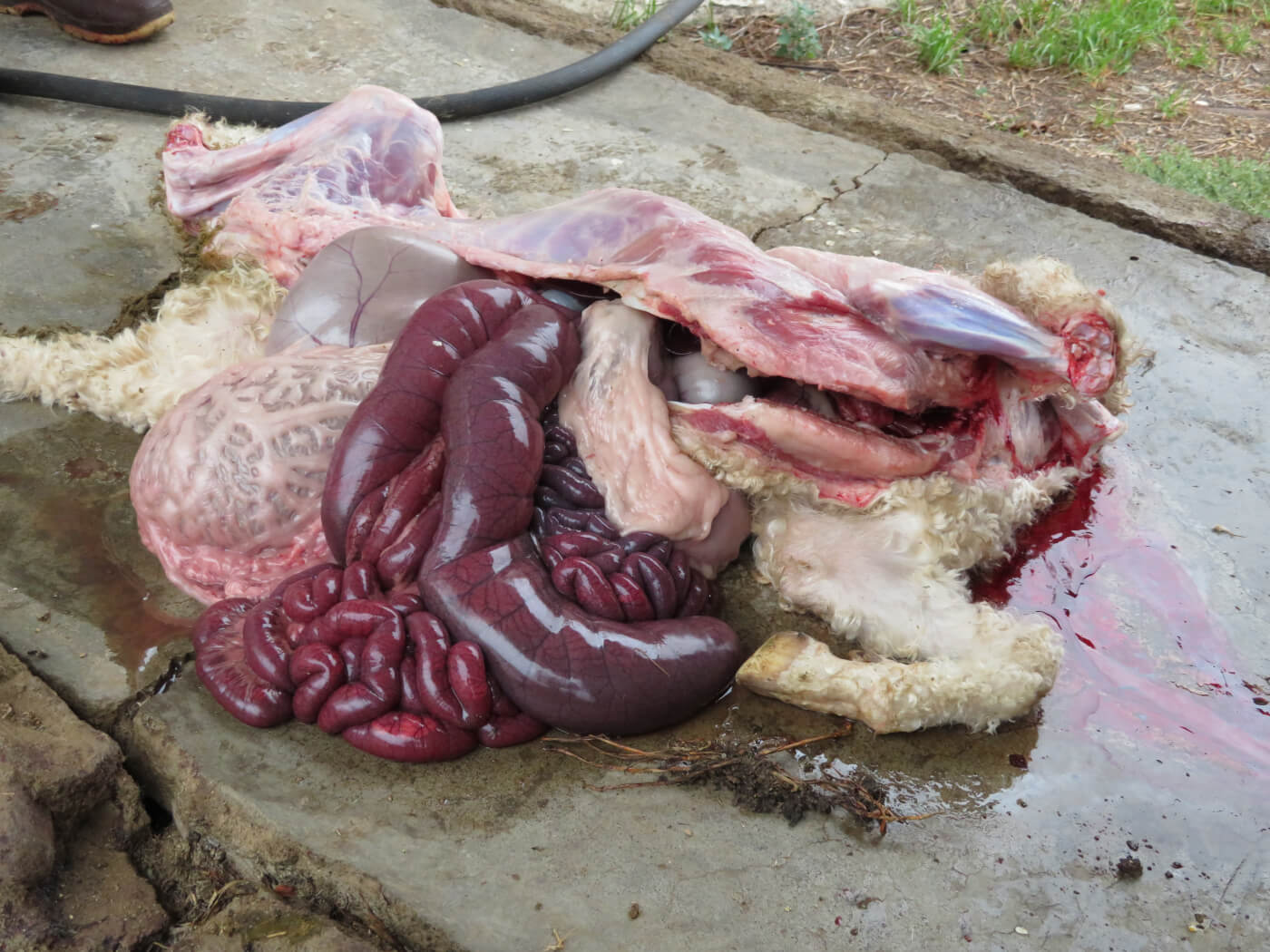
These are the remains of one goat who was slaughtered while fully conscious.
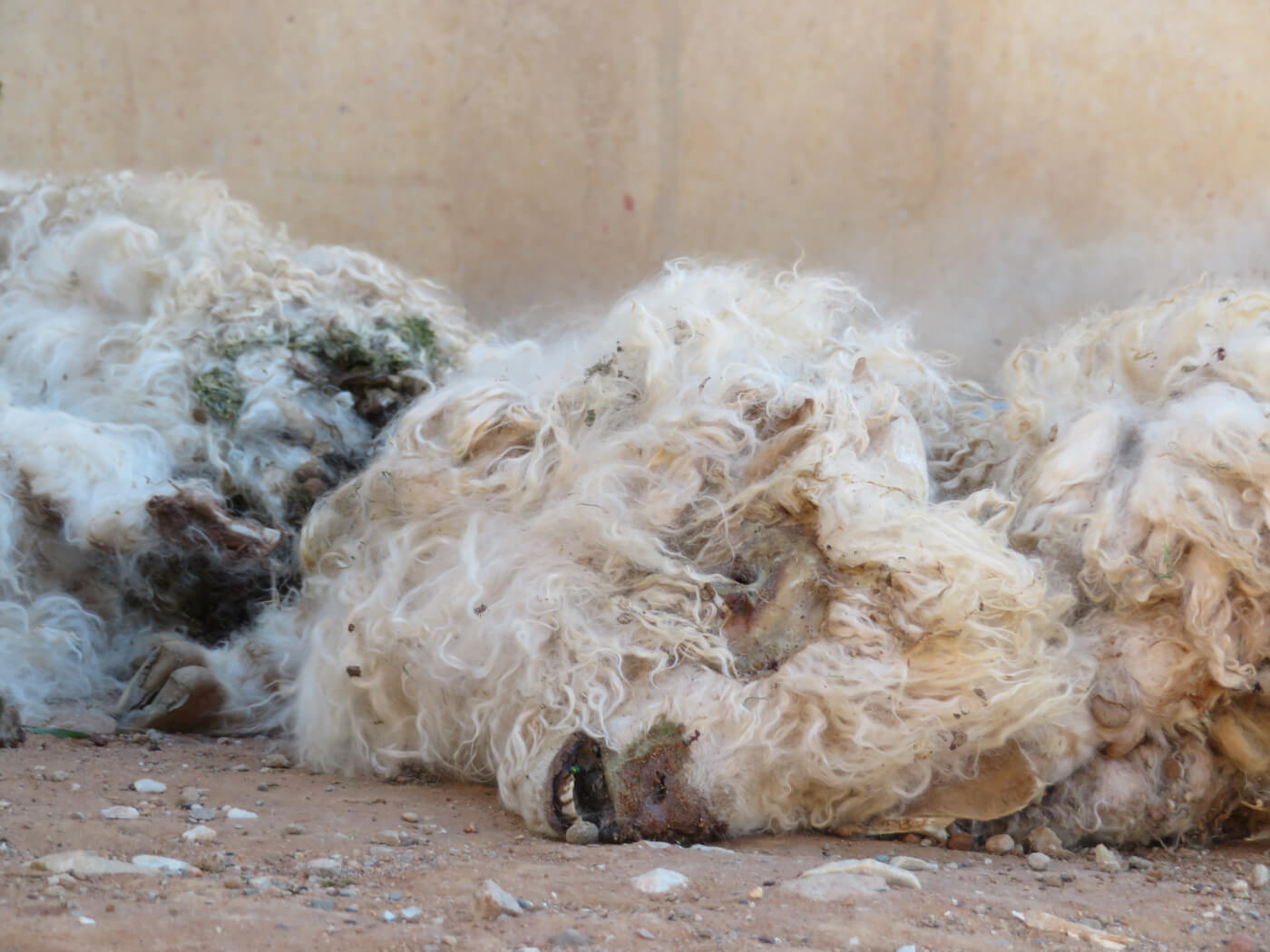
This is one of nine goats found dead one morning after reportedly being killed by a predator.
Other goats died of injuries or of thirst after getting stuck in thorns while looking for food in farmers' fields. Workers even sheared the rotting corpses of dead goats.
Goats Deemed Unprofitable Died Agonizing Deaths
Goats who survive repeated shearing continue to be exploited for their mohair for five or six years, until their teeth are "completely worn down" from eating a rough, coarse diet and they can no longer eat.
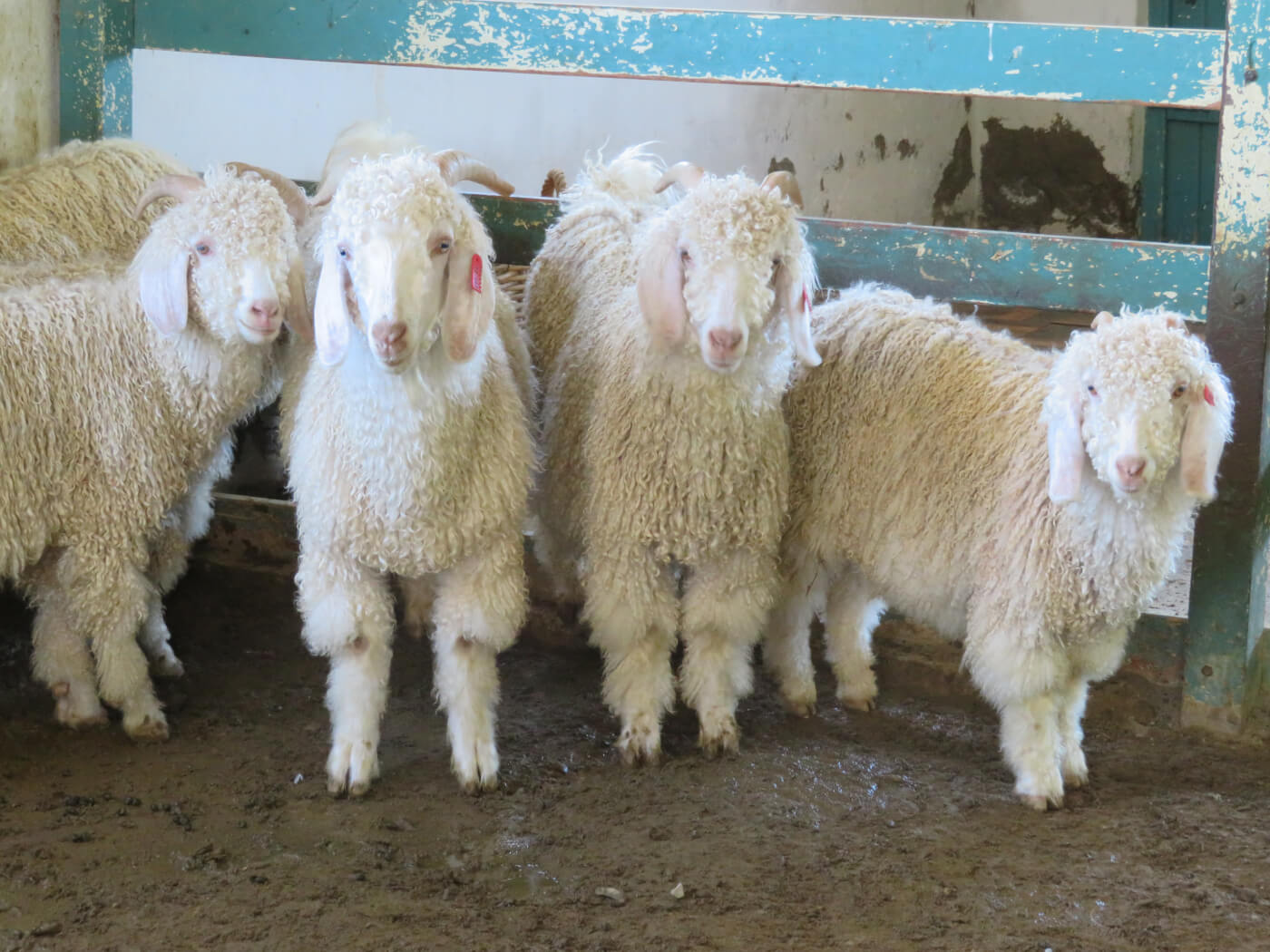
Shearing robs goats of their natural insulation. They’re highly susceptible to cold temperatures and experience high mortality rates if left without shelter, as they often are, for four to six weeks after shearing.
After that, about 90 percent of the surviving angora goats in South Africa are sold for crude backyard slaughter. At one farm, a worker slowly cut the throats of fully conscious goats with a dull knife and then broke their necks. He hacked one animal's head right off. The other remained conscious and was kicking for more than a minute after the worker made his first cut.
Other goats are hauled to slaughterhouses. On the kill floor that the eyewitness visited, goats were jolted with electricity, hung upside down by one leg, slashed across the throat, bled, and skinned.
Some clothing industries and retailers claim that the animal hair, skin, and feathers they sell are byproducts of the meat industry. But angora goats are raised specifically for their coats, and many never even make it to slaughter.
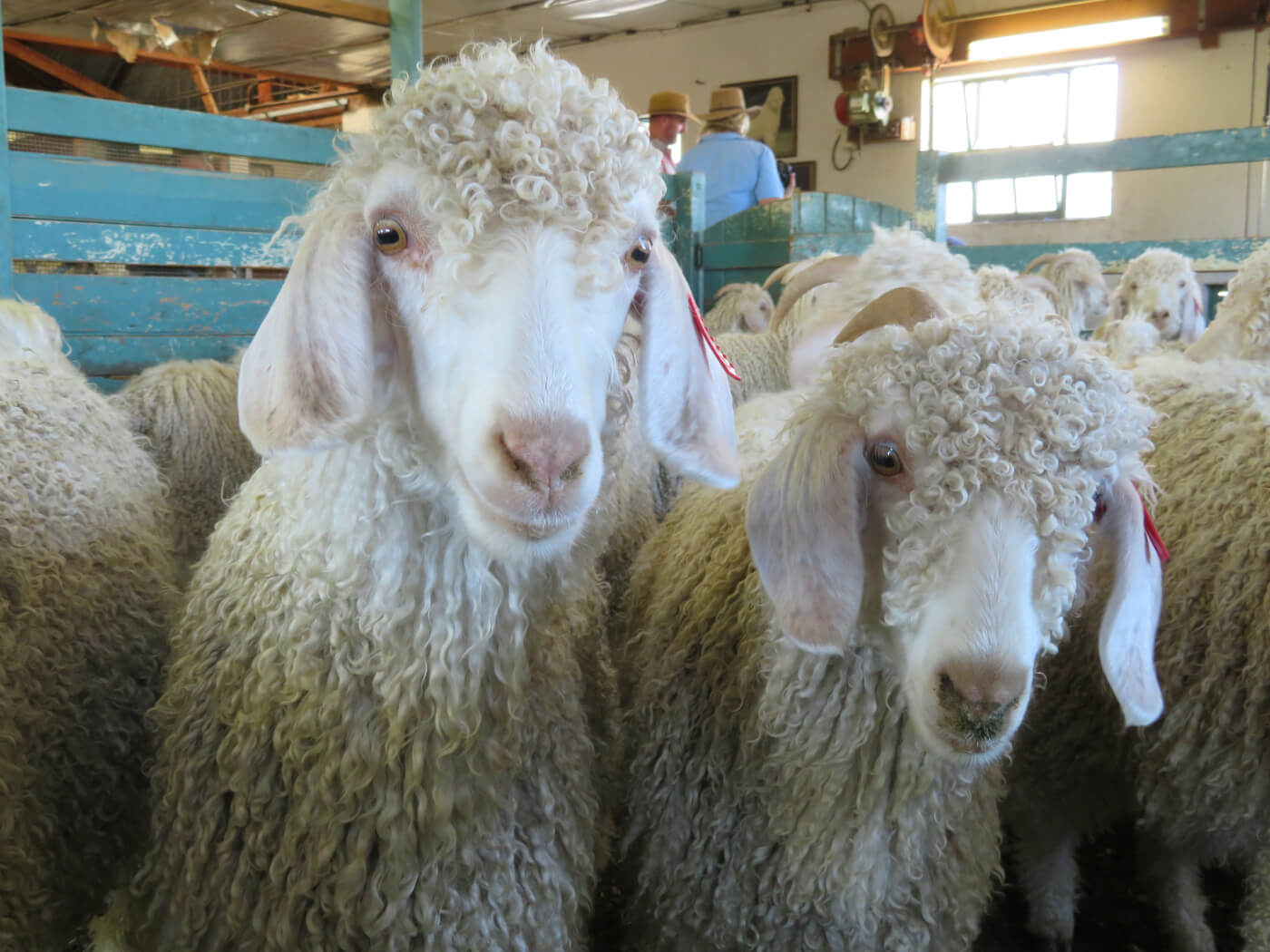
Angora goats used for mohair are killed far short of their natural 10-year life expectancy—as soon as they’re no longer useful to the industry.
You Can Help Stop This!
The best thing that you can do for angora goats is refuse to buy mohair! It's easy to check the label when you're shopping. If it includes the word "mohair," leave it on the shelf.
Please also ask Miyuki to drop mohair immediately in favor of animal-friendly materials that are free of cruelty.
UN LAB Middleware Label: Description Ends